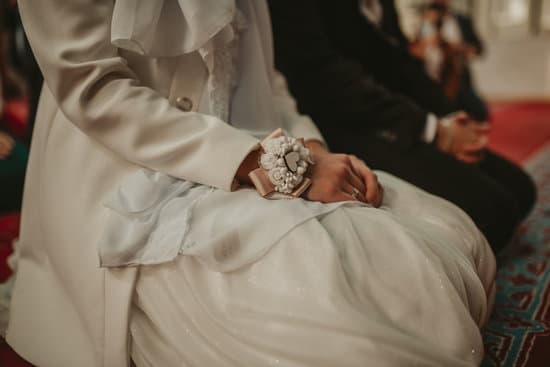How much does it cost to tailor a wedding dress? Tailoring a wedding dress is an essential part of the wedding preparation process. It can have a significant impact on the overall look and fit of the dress, ensuring that it complements the bride’s body perfectly and enhances her natural beauty on the big day. From minor adjustments to major alterations, the tailoring process plays a crucial role in creating the dream wedding gown.
The process of tailoring a wedding dress involves several steps, including measuring, alterations, and fittings. Each step is essential in achieving the desired fit and silhouette for the bride. Factors such as the complexity of alterations, fabric type, and the expertise of the tailor can all influence the cost of this process. Therefore, it’s important for brides to understand these factors when budgeting for their dress alterations.
In this article, we will delve into the various factors affecting the cost of tailoring a wedding dress and provide an average cost range based on location and extent of alterations needed. Additionally, we will discuss potential additional costs that brides should consider when budgeting for their dress alterations, as well as offer practical tips on how to save money without compromising on quality or fit.
Finally, we will provide guidance on finding a skilled and trustworthy tailor for wedding dress alterations based on real bride experiences with cost breakdowns and overall satisfaction with the results.
The Tailoring Process
The process of tailoring a wedding dress is a crucial step in ensuring that the bride looks and feels her best on her special day. Tailoring involves various steps, including measuring, alterations, and fittings, all of which contribute to creating a perfect fit for the dress.
Measuring
The first step in the tailoring process is taking accurate measurements of the bride’s body. This step is essential to ensure that the dress will fit perfectly. The tailor will take measurements of various parts of the body, such as the bust, waist, hips, and length. These measurements serve as the foundation for any alterations that may be needed.
Alterations
Once the measurements are taken, the next step is to determine what alterations are necessary to achieve the desired fit. This can include taking in or letting out certain areas of the dress, hemming the length, adjusting straps or sleeves, or reshaping the neckline. The complexity of these alterations will depend on factors such as the original design of the dress and any customization that may be required.
Fittings
After determining what alterations are needed, fittings will be scheduled to ensure that the adjustments are made accurately. Multiple fittings may be necessary to fine-tune the fit of the dress. During these fittings, brides should wear their wedding shoes and undergarments to get a complete picture of how the dress will look on their special day.
Overall, understanding and appreciating each step in the tailoring process is important in achieving a wedding dress that fits like a dream. Knowing what goes into this process can also help brides understand why tailoring costs vary depending on factors such as complexity and expertise required for each specific alteration.
Factors Affecting Cost
When it comes to tailoring a wedding dress, the cost can vary significantly depending on a number of factors. One of the key factors that can impact the cost of alterations is the complexity of the changes that need to be made to the dress.
For example, simple alterations such as hemming or taking in the sides may cost less compared to more complex alterations like restructuring the neckline or adding embellishments. The more intricate and time-consuming the alterations, the more it is likely to cost.
Additionally, the type and fabric of the wedding dress can also affect the overall cost of tailoring. Dresses made from delicate or difficult-to-alter fabrics such as lace, silk, or chiffon may require special handling and expertise, which could result in higher alteration costs. On the other hand, dresses made from simpler fabrics like satin or taffeta may be easier and less expensive to alter.
Furthermore, the expertise of the tailor themselves can play a significant role in determining how much it costs to tailor a wedding dress. Highly skilled and experienced tailors may charge more for their services due to their reputation and ability to execute complex alterations with precision. Conversely, less experienced or novice tailors may offer lower pricing but may not have the same level of expertise or finesse in their work.
Given these factors impacting tailoring costs for wedding dresses, it’s important for brides to factor them into their budgeting considerations when planning for dress alterations. By understanding how these different elements contribute to overall costs, brides can make informed decisions about their expectations and priorities when it comes to finding a tailor for their special day.
Average Cost
When it comes to tailoring a wedding dress, the cost can vary widely depending on several factors. The average cost for alterations can range from $200 to $800, with some dresses requiring more extensive work potentially costing even more. Location is one major factor that affects the cost of tailoring a wedding dress. Tailors in larger cities or areas with a higher cost of living may charge more for their services compared to those in smaller towns or rural areas.
The extent of alterations needed also plays a significant role in determining the cost. Simple adjustments like hemming or taking in the sides of the dress are generally less expensive, while more complex alterations such as changing the neckline or adding embellishments can increase the overall cost. The type of fabric used in the dress is another contributing factor; working with delicate materials like lace or silk may require more expertise and time, thereby impacting the final price.
Brides should also be aware that rush fees and additional costs for special requests can add to the total expense of tailoring a wedding dress. Rush fees are charged when alterations need to be completed within a short timeframe, so brides should plan ahead to avoid these extra costs whenever possible.
Similarly, if there are specific embellishments or customization requests, they should budget accordingly for these additions. When factoring in all these considerations, it becomes clear that the question “how much does it cost to tailor a wedding dress” has a complex answer contingent upon various factors.
| Factor | Impact on Cost |
|---|---|
| Location | Variation based on cost of living |
| Extent of Alterations Needed | Simple vs Complex changes |
| Fabric Type | Different materials may require added expertise and time |
| Add-ons & Rush Fees | Potential extra costs for special requests and rushed timelines |
Additional Costs
When budgeting for wedding dress alterations, it’s essential for brides to consider any additional costs that may arise throughout the tailoring process. Beyond the standard alterations, there are certain factors that can add to the overall cost of altering a wedding dress.
One potential additional cost to be aware of is rush fees. If you have a tight timeline for your wedding and need your dress alterations to be completed quickly, some tailors may charge an extra fee for expedited services. This is something to keep in mind when scheduling your alteration appointments and discussing timelines with your chosen tailor.
Another factor that can contribute to the cost of dress alterations is the addition of embellishments. Whether you want to add lace, beading, or other decorative elements to your dress, these custom touches can come with an added price tag. It’s important to discuss any desired embellishments with your tailor upfront so they can provide a clear estimate of the associated costs.
Lastly, brides should also consider accessories such as veils or headpieces when budgeting for dress alterations. While not always directly related to the alteration process itself, these accessories are often chosen and tailored alongside the wedding dress and should be factored into the overall budget.
Overall, it’s crucial for brides to have a conversation with their chosen tailor about any potential additional costs before beginning the alteration process. By being proactive and transparent about expectations and preferences, brides can ensure they are financially prepared for all aspects of their wedding dress alterations.
| Additional Cost Factors | Considerations |
|---|---|
| Rush Fees | Discuss timelines with your tailor upfront |
| Embellishments | Ask for an estimate on custom additions |
| Accessories | Budget for veils or headpieces alongside dress alterations |
Tips for Saving Money
When it comes to preparing for a wedding, the costs can quickly add up. Between the venue, catering, and attire, it’s no surprise that many brides are looking for ways to save money without sacrificing quality. When it comes to tailoring a wedding dress, there are several tips and tricks that can help brides save money while still achieving the perfect fit and look for their special day.
Here are some practical tips on how brides can save money on dress alterations:
- Shop Around for Tailoring Services: Don’t settle for the first tailor you come across. Take the time to research and compare prices from different tailors in your area. Some may offer competitive rates or package deals for bridal alterations.
- Consider Off-the-Rack Options: If budget is a major concern, consider purchasing an off-the-rack wedding dress that closely matches your measurements. This could reduce the need for extensive alterations, saving you both time and money.
- Be Mindful of Fabric Choices: Certain fabrics may require more intricate alterations due to their delicate nature or specific construction. When shopping for a wedding dress, keep in mind that simpler fabric choices can result in lower alteration costs.
By being strategic in your approach to dress alterations and considering these money-saving tips, you can achieve the perfect fit for your wedding dress without breaking the bank.
It’s important to remember that while saving money is essential, it should not come at the expense of quality or craftsmanship when it comes to tailoring a wedding dress. Brides should prioritize finding a skilled tailor who has experience working with bridal attire and can provide quality alterations at a reasonable price. By carefully weighing all options and seeking out reputable professionals, brides can balance affordability with excellent results in their dress alterations.
Finding a Skilled Tailor
When it comes to finding a skilled tailor for wedding dress alterations, it’s important for brides to do their research and find a trustworthy professional who can deliver the results they desire. Here are some tips on how to find the right tailor for your wedding dress alterations:
- Ask for Recommendations: Reach out to friends, family, or other brides who have recently gone through the process of wedding dress alterations. They may be able to recommend a skilled tailor based on their own positive experiences.
- Read Reviews: Take advantage of online resources such as review websites and social media platforms to read reviews of local tailors. Look for consistent positive feedback and specific mentions of bridal alterations.
- Schedule Consultations: Once you’ve narrowed down your options, schedule consultations with potential tailors. Use this time to ask about their experience with bridal alterations, see examples of their work, and get a sense of their professionalism and communication style.
- Discuss Pricing: During the consultation, be sure to discuss pricing for the specific alterations you need. Ask for a breakdown of costs and inquire about any potential additional fees, such as rush fees or charges for adding embellishments.
By following these tips, brides can feel confident in their decision when choosing a tailor for their wedding dress alterations. Taking the time to find a skilled and trustworthy professional can make all the difference in achieving the perfect fit and look for your special day.
Remember that finding the right tailor is crucial in ensuring that your wedding dress alterations are handled with care and expertise. The right professional can bring your vision to life while also providing valuable guidance throughout the tailoring process.
Real Bride Experiences
When it comes to tailoring a wedding dress, the cost is an important factor to consider. The overall cost of tailoring a wedding dress can vary depending on several factors, including the complexity of the alterations needed, the fabric of the dress, and the expertise of the tailor. Brides should budget for the average cost range for dress alterations based on their location and the extent of alterations required.
In addition to the basic cost of alterations, brides should also consider any additional costs that may arise during the tailoring process. This could include rush fees for last-minute alterations or the cost of adding embellishments to enhance the overall look of the dress. Being aware of these potential additional costs can help brides budget more accurately and avoid any surprises down the line.
For brides looking to save money on dress alterations without compromising on quality or fit, there are several practical tips that can help. From shopping around for quotes from different tailors to being open to alternative solutions for certain alterations, there are ways to minimize costs without sacrificing the vision for your dream wedding dress. By being proactive and resourceful in seeking out cost-effective options, brides can achieve their desired look while staying within their budget.
Overall, while tailoring a wedding dress does come with a cost, many brides find that it is well worth the investment in order to achieve a perfect fit and look for their special day. Through researching skilled and trustworthy tailors and being mindful of potential additional costs, brides can navigate through the process of dress alterations with confidence and ultimately be satisfied with the results.
Frequently Asked Questions
How Many Months Before Wedding Should You Get Your Dress Altered?
You should start getting your wedding dress altered around 2-3 months before the big day. This allows enough time for multiple fittings and any necessary adjustments without feeling rushed or stressed.
Why Are Wedding Dress Alterations So Expensive?
Wedding dress alterations can be expensive due to the intricate work involved in customizing the gown to fit perfectly. Skilled seamstresses and delicate materials contribute to the overall cost of the alterations process.
Is 3 Months Enough Time for Wedding Dress Alterations?
Three months can be enough time for wedding dress alterations if there are minimal changes needed. However, it’s always better to start the alteration process earlier to allow for any unexpected issues or multiple fittings that may be required to ensure a perfect fit on the wedding day.

I have been involved in marriages for over 20 years helping couples and singles understand more about them.





